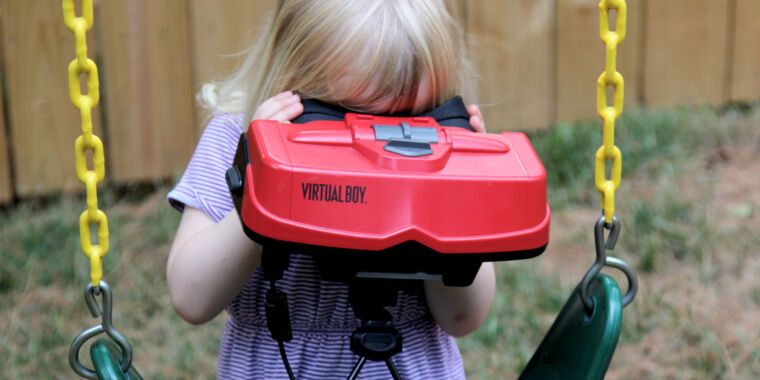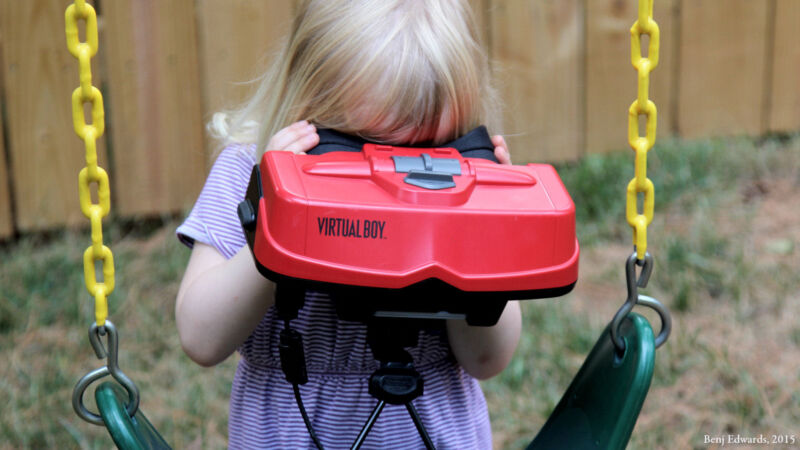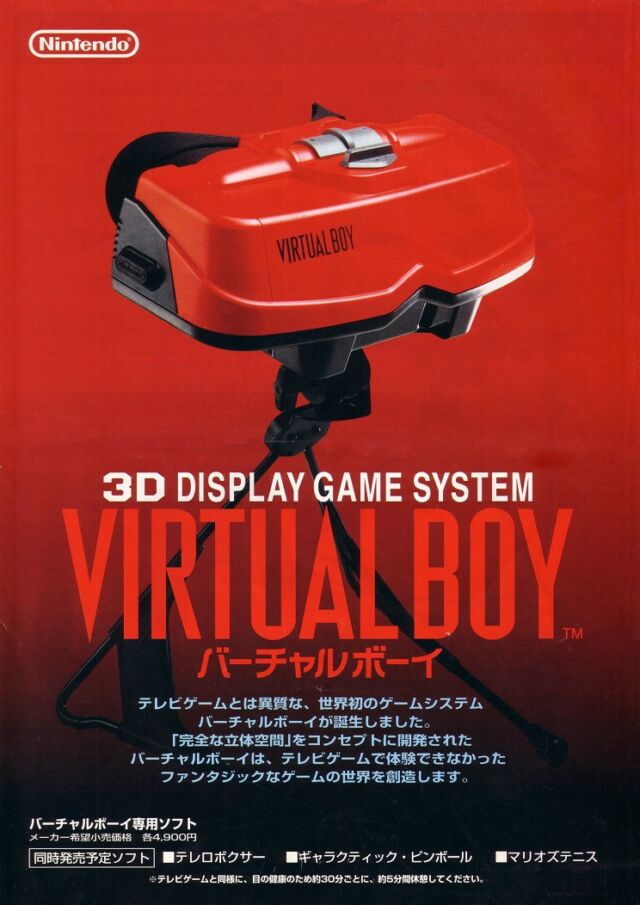Virtual Boy: The bizarre rise and quick fall of Nintendo’s enigmatic red console

Seeing Red —
How Nintendo took a gamble on a new kind of gaming experience in the ’90s.

Ars Technica AI Reporter and tech historian Benj Edwards has co-written a book on the Virtual Boy with Dr. Jose Zagal. In this exclusive excerpt, Benj and Jose take you back to Nintendo of the early ’90s, where a unique 3D display technology captured the imagination of legendary designer Gunpei Yokoi and set the stage for a daring, if ultimately ill-fated, foray into the world of stereoscopic gaming.
Seeing Red: Nintendo’s Virtual Boy is now available for purchase in print and ebook formats.
A full list of references can be found in the book.
Nearly 30 years after the launch of the Virtual Boy, not much is publicly known about how, exactly, Nintendo came to be interested in developing what would ultimately become its ill-fated console. Was Nintendo committed to VR as a future for video games and looking for technological solutions that made business sense? Or was the Virtual Boy primarily the result of Nintendo going “off script” and seizing a unique, and possibly risky, opportunity that presented itself? The answer is probably a little bit of both.
As it turns out, the Virtual Boy was not an anomaly in Nintendo’s history with video game platforms. Rather, it was the result of a deliberate strategy that was consistent with Nintendo’s way of doing things and informed by its lead creator Gunpei Yokoi’s design philosophy.
Dabbling in virtual reality?

Enlarge / A 1995 Japanese ad for the Nintendo Virtual Boy.
Nintendo
The late 1980s and 1990s were a heady time for virtual reality, and, when it came to generating public interest, Japan was arguably leading the charge. In May 1991, Hattori Katsura’s Jinkō genjitsukan no sekai (The world of the feeling of artificial reality) was published. It was the first best-selling general audience book on VR, beating Howard Rheingold’s watershed Virtual Reality by a few months. Japan is also “where VR was first repackaged as a consumer technology” and, by 1991, it had more VR systems than anywhere else in the world.
However, VR was neither presented nor perceived in the same way in Japan as it was in the United States. First, while VR research in the United States was largely developed and driven by military interests, in Japan, it came out of a telecommunications context. Second, in the mid-1990s at least, Japanese VR research had an engineering emphasis rather than computer science like in the United States. Thus, the Japanese public’s perception of VR was shaped by the additional availability, via public demonstrations for example, of VR devices and experiences different from those shown elsewhere. These devices and experiences were characterized in the United States as “cool gadgets” and “strange experiments” but would, perhaps taken together, provide alternative highlights of VR’s potential as a medium.
Prior to the release of the Virtual Boy, Nintendo designers and engineers expressed at least some interest in virtual reality. For example, when interviewed by Satoru Iwata about the development of the Nintendo’s autostereoscopic handheld Nintendo 3DS, Shigeru Miyamoto commented, “To start at the beginning, at the time [just before the creation of the Virtual Boy], I was interested in virtual reality, and was one of the staff that went on and on about how we should do something with 3D goggles. I didn’t exactly twist his arm, but I would talk with Yokoi-san about how [3D] goggles would be interesting.”
However, not much is known outside of Nintendo if this interest led to in-house experiments or the development of prototype virtual reality systems. Some reports, mostly secondhand, do exist that there was some research taking place. For example, while researching an article about the Virtual Boy for FastCompany, Benj Edwards interviewed Takefumi Makino, the biographer of Gunpei Yokoi and a friend of Yokoi’s for a period near Yokoi’s death in 1997. According to Makino, Nintendo experimented with virtual reality prior to creating the Virtual Boy, but it found the experience unsatisfactory.


